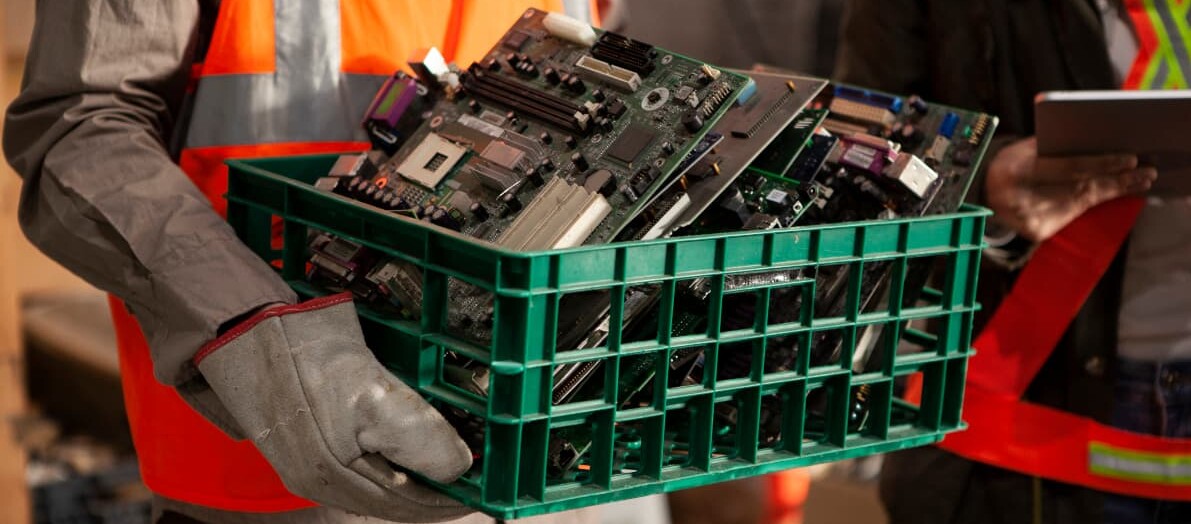Green IT: Definition
According to the Federal Ministry of the Environment, the term "Green IT" covers "environmentally responsible products and services of Information and Communications Technology (ICT), as well as the use of ICT for environmental protecton". This relates to the entire life cycle, from the demand for raw materials right up to the emission of CO₂, from production to disposal. The aim is, accordingly, a "sustainable digitial transformation of society, in which the increasing use of digital technology is not only associated with an increasingly disadvantageous impact upon the environment."
Survey: IT generates CO₂ on a massive scale
Information and communications technology consumes a lot of energy. Cloud services, for example, operate giant data centers, which need to be supplied with energy and cooled. These data centers alone are supposed to be responsible for around three per cent of the energy consumption throughout the EU. Blockchain technologies or Artificial Intelligence (AI) drive the energy requirement of data centers even higher.
However, the terminals at the company are responsible for the considerably larger proportion of CO₂ emissions caused by IT. According to a McKinsey survey, smartphones, PCs, printers, etc. consume almost twice as much CO₂ as the data centers in this country – in particular, because they are exchanged comparatively often, and the CO₂ emissions from production are, for that reason, important. According to the investigation, in 2021 corporate IT in Germany generated between 13 and 17 megatonnes of carbon dioxide emissions, which also includes the operation of software.
And a survey of the French The Shift Project already forecast, back in 2019, that the emissions of the digital economy could make up an entire eight per cent of the total CO₂ emissions by 2025.
6 million professional buyers are waiting for you!
Present your product range online to buyers and make sure that your company is visible to the right people. Expand your international internet presence with the leading B2B platform in Europe. With a free profile on europages!
Green IT brings a competitive advantage
Due to the whopping increase in price of almost all conventional energy sources, the problem of consumption is increasingly coming to the fore at companies. Through the use of Green IT and sustainable procurement in this connection, companies can target relevant competitive advantages.
According to the McKinsey survey, 50–60 per cent of emissions that arise due to the operation of terminals can, for example, be saved by means of more forward-looking and environmentally-friendly procurement. Thus, companies have increasingly been able to resort to devices that bear energy efficiency certifications. Or even refurbished devices, including ones with a high proportion of recycling or a longer service life.
Such decisions not only have a positive impact upon the environment and the net operating profit, but also on the social reputation, the brand image, the attractiveness as an employer and customer loyalty.
Green IT: Examples of implementation
Various examples of Green IT have already become established in corporate practice. One option is, for example, the use of high-density environments. This hardware is in fact more expensive than conventional hardward, at the procurement stage, but amortizes quickly, as the existing surfaces and the energy deployed are used more efficiently.
The liquid cooling also saves energy. These days, already around three quarters of the thermal flow can be discharged through the liquid cooling. That, firstly, reduces the major part of the mechanical cooling, and, secondly, the heat that arises can be used secondarily.
In general, it is advantageous to relocate processes and applications into the Cloud. For the trend goes in the direction of such systems consuming less energy, due to the size scaling.
Further measures for resource-saving patterns: The paperless office largely refrains from using printers and toners, ecological disposal of devices ensures a greater degree of recycling, and the purchase of green energy ensures sustainable power generation.

